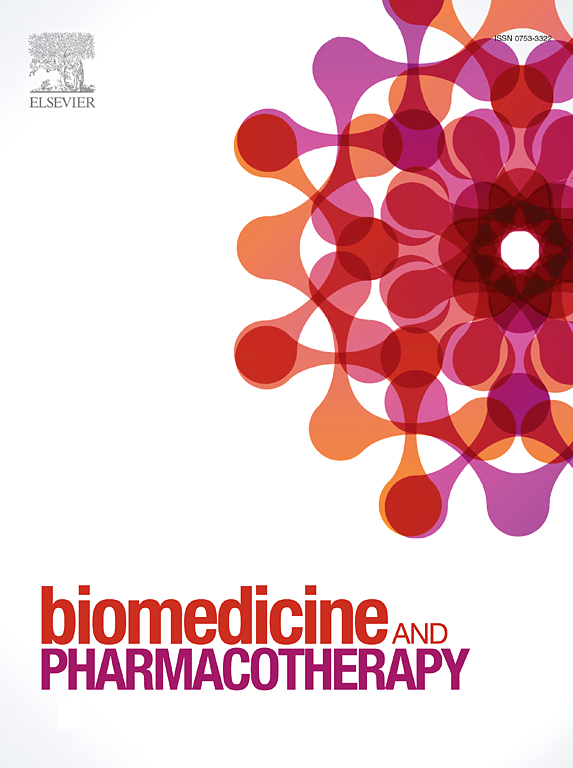Morusin, a novel inhibitor of ACLY, induces mitochondrial apoptosis in hepatocellular carcinoma cells through ROS-mediated mitophagy
IF 6.9
2区 医学
Q1 MEDICINE, RESEARCH & EXPERIMENTAL
引用次数: 0
Abstract
Objective
Morusin (Mor), a prenylated flavonoid isolated from the root bark of Morus alba L., exhibits potent anti-tumour effects; however, the molecular target of Mor is still not entirely clear. This study aimed to elucidate the mechanism of Mor against hepatocellular carcinoma (HCC) and identify potential molecular targets.
Methods
Mitochondrial function was assessed by measuring the mitochondrial membrane potential, mitochondrial ultrastructure, oxygen consumption, and ATP levels. Mor-induced mitophagy was confirmed using western blotting, immunofluorescence, and fluorescent probes. Transcriptomics, flow cytometry, western blotting, qRT-PCR and biochemical assays were used to reveal the molecular mechanisms and targets of Mor against HCC. We further validated the interaction between Mor and the target proteins using molecular docking and biolayer interferometry (BLI). The inhibitory effect of Mor in vivo was evaluated using a Hep3B murine xenograft model.
Results
Mor significantly reduced the ATP citrate lyase (ACLY) expression and inhibited ACLY activity in HCC cells. BLI analysis demonstrated a direct interaction between Mor and the ACLY active domain. Mor-induced ACLY inhibition led to ROS accumulation in HCC cells, which caused mitochondrial damage, triggered PINK1/Parkin-mediated mitophagy, and ultimately induced mitochondrial apoptosis. We further verified that ROS is crucial in the apoptotic action of Mor through experiments regarding an ROS scavenger. Mor also significantly inhibited tumour xenograft growth in vivo. In addition, analysis of human liver cancer clinical samples revealed elevated ACLY levels positively correlated with histologic grade.
Conclusion
Collectively, our findings highlight Mor as a potent bioactive inhibitor of ACLY and a promising candidate for HCC therapy.
新型 ACLY 抑制剂 Morusin 通过 ROS 介导的有丝分裂诱导肝癌细胞线粒体凋亡
目的Morusin(Mor)是从桑树根皮中分离出来的一种前烯化黄酮类化合物,具有很强的抗肿瘤作用;然而,Mor的分子靶点仍不完全清楚。本研究旨在阐明 Mor 抗肝细胞癌(HCC)的机制,并确定潜在的分子靶点。方法通过测量线粒体膜电位、线粒体超微结构、耗氧量和 ATP 水平来评估线粒体功能。使用 Western 印迹、免疫荧光和荧光探针证实了 Mor 诱导的有丝分裂。我们利用转录组学、流式细胞术、Western 印迹、qRT-PCR 和生化分析揭示了 Mor 抗 HCC 的分子机制和靶点。我们还利用分子对接和生物层干涉仪(BLI)进一步验证了Mor与靶蛋白之间的相互作用。我们使用 Hep3B 小鼠异种移植模型评估了 Mor 在体内的抑制作用。BLI 分析表明 Mor 与 ACLY 活性结构域之间存在直接相互作用。Mor诱导的ACLY抑制导致ROS在HCC细胞中积累,造成线粒体损伤,引发PINK1/Parkin介导的有丝分裂,最终诱导线粒体凋亡。我们通过ROS清除剂的实验进一步验证了ROS在Mor的凋亡作用中的关键作用。Mor 还能明显抑制体内肿瘤异种移植的生长。此外,对人类肝癌临床样本的分析表明,ACLY 水平的升高与组织学分级呈正相关。
本文章由计算机程序翻译,如有差异,请以英文原文为准。
求助全文
约1分钟内获得全文
求助全文
来源期刊
CiteScore
11.90
自引率
2.70%
发文量
1621
审稿时长
48 days
期刊介绍:
Biomedicine & Pharmacotherapy stands as a multidisciplinary journal, presenting a spectrum of original research reports, reviews, and communications in the realms of clinical and basic medicine, as well as pharmacology. The journal spans various fields, including Cancer, Nutriceutics, Neurodegenerative, Cardiac, and Infectious Diseases.

 求助内容:
求助内容: 应助结果提醒方式:
应助结果提醒方式:


